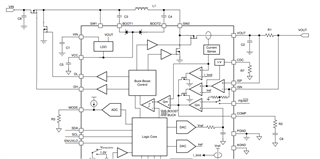Other Parts Discussed in Thread: TPS55288
Hi team,
Our customers get interesting trouble in charging oscillation on BQ25700A . They use adapter with 20V 5A to charge 4s batteries where they set the maximum charging current at 4A.They control the charging current from 0A to 4A.And the sw frequency is 800kHz.
In their application, there is two brands resistors on the current sense resistor named (R89 CAR1206). They find that when they use current sense resistor from brand A as R89, they test the the oscillation on input current and output current shown in slides. But they use resistor from brand b, in same scenario, they do not find oscillation.
Could you please answer the questions below:
1.could you please to review the schematic?
2. Do we have such resistor selection criteria?
3. do you have any idea about how different resistors causing the oscillation?
4. Could you please share how the input current measured by ACN and ACP affect the control loop? I find the TPS55288 which is current-average-mode buck-boost convert. Is the control topology of BQ25700A same as TPS55288?

YOURS
NAN

